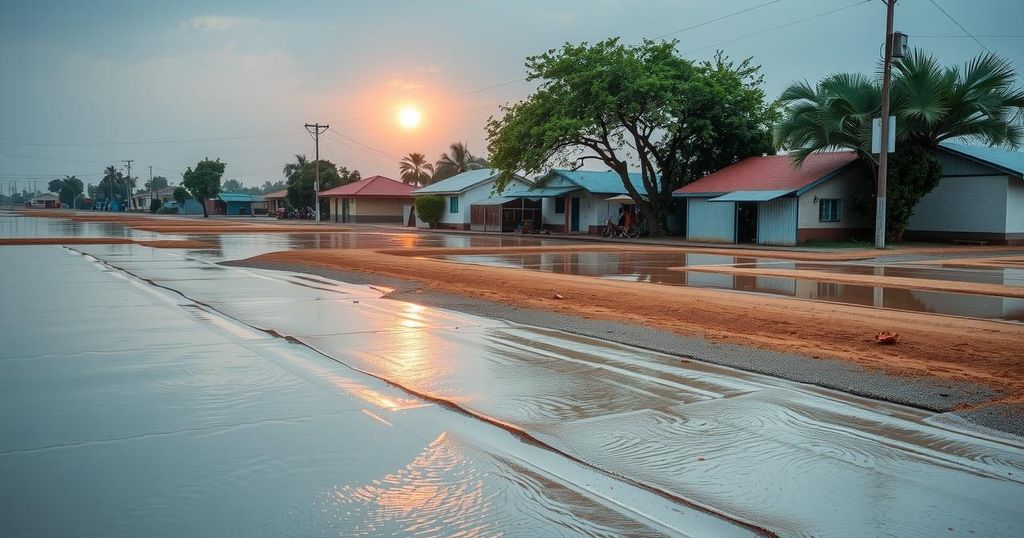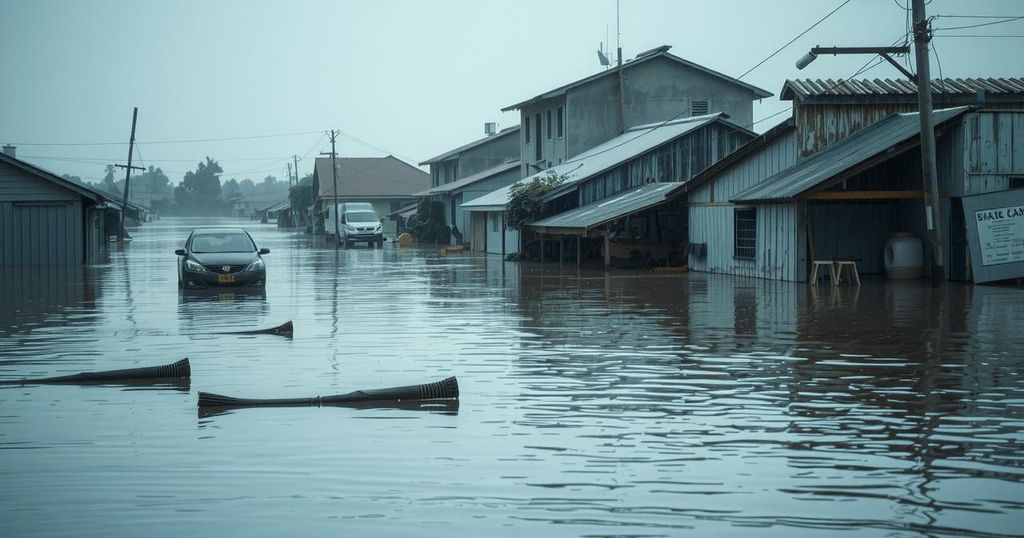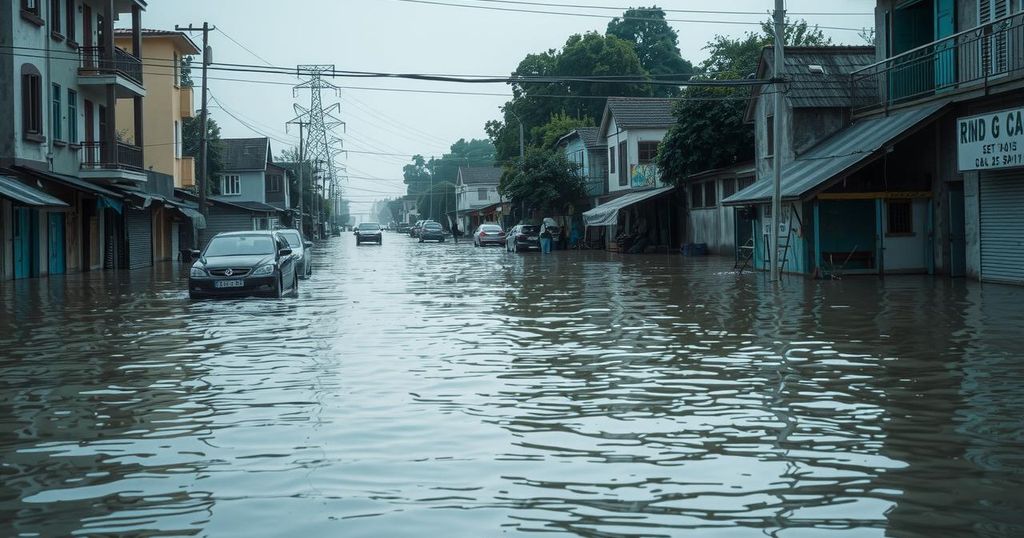Increased Intensity and Frequency of Extreme Flooding Events in the Sahel Due to Climate Change
Research indicates that extreme flooding events in the Sahel are set to intensify and become more frequent due to climate change, particularly through altered activity of African easterly waves (AEWs). The study predicts significant increases in AEW activity by the end of the 21st century, which will lead to heightened rainfall and potentially change Saharan dust transport processes, impacting regional climate dynamics.
A recent study has indicated that extreme flooding events in the Sahel region are likely to become more intense and frequent as global temperatures rise. This increase is attributed to changes in African easterly waves (AEWs), which are crucial weather systems that influence rainfall patterns and Saharan dust transport. The study analyzed how climate change alters these waves, predicting substantial changes in their activity by the end of the 21st century under various emission scenarios.
The research revealed a notable enhancement in AEW activity across the Sahel-Sahara region, significantly influenced by an intensified temperature gradient between the warm Guinea Coast and the cooler Sahara. This dynamic leads to greater baroclinicity, which boosts monsoon flow and results in heightened convergence and vertical motion. These alterations in environmental conditions are expected to worsen flooding, linking increased wave activity to more severe rainstorms in already drought-stricken areas.
Moreover, the implications of these findings extend beyond rainfall, affecting Saharan dust transport, which is critical for both regional and Atlantic weather patterns. Strong AEWs can influence the timing and development of tropical cyclones by either stalling their formation or modifying the environmental conditions necessary for such systems to develop, especially in warmer ocean waters.
Such phenomena illustrate the intricate relationship between climate change and regional atmospheric dynamics, underscoring the necessity for further research on how AEWs will adapt in a warming environment and their broader impacts on climate and weather patterns in Northern Africa.
The Sahel region, which spans parts of northwestern Africa, is characterized by its susceptibility to both drought and flooding, making it a critical area for climate study. African easterly waves (AEWs) are significant meteorological systems that transport moisture and dust, playing a vital role in rainfall during the West African monsoon. As global temperatures rise due to climate change, understanding how AEWs will evolve is essential to predicting future weather extremes, particularly in the context of increasing flooding events and changes in dust transport patterns. The research conducted involved examining various Earth system models to project changes in wave activity under different climate scenarios, highlighting the complexities of weather dynamics in relation to global warming. The findings of this study emphasize the interconnectedness of climate factors and their local impacts on ecosystems and communities, providing insights that are crucial for future climate adaptation strategies in vulnerable regions.
In summary, the study elucidates a concerning trend regarding the future of extreme flooding in the Sahel, emphasizing a projected increase in both intensity and frequency attributed to shifts in African easterly waves (AEWs). The interplay between temperature gradients and monsoon dynamics is pivotal to these changes. Furthermore, understanding AEWs’ influence on both local and wider weather patterns is essential for developing comprehensive climate adaptation measures in a region already vulnerable to climatic extremes.
Original Source: www.downtoearth.org.in




Post Comment